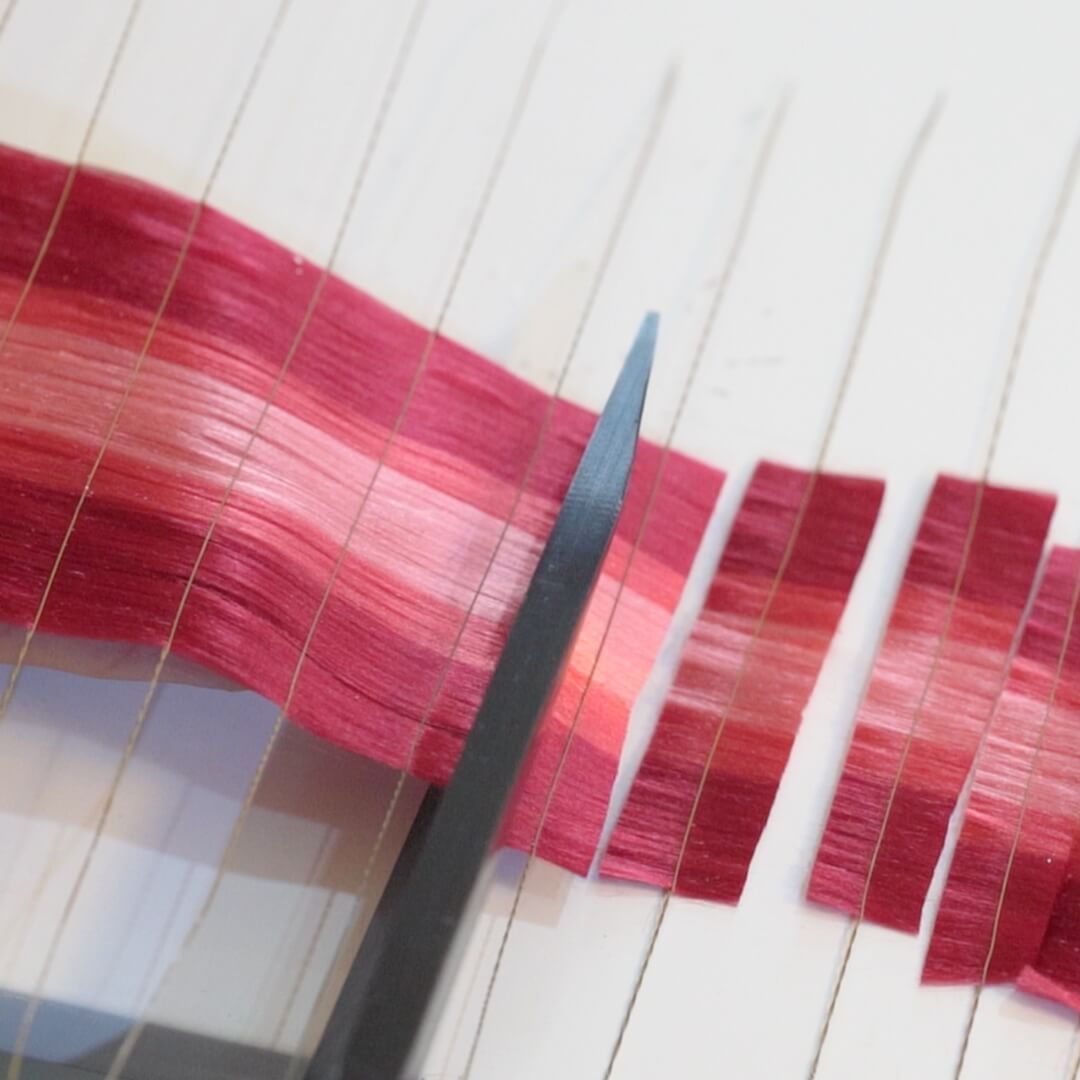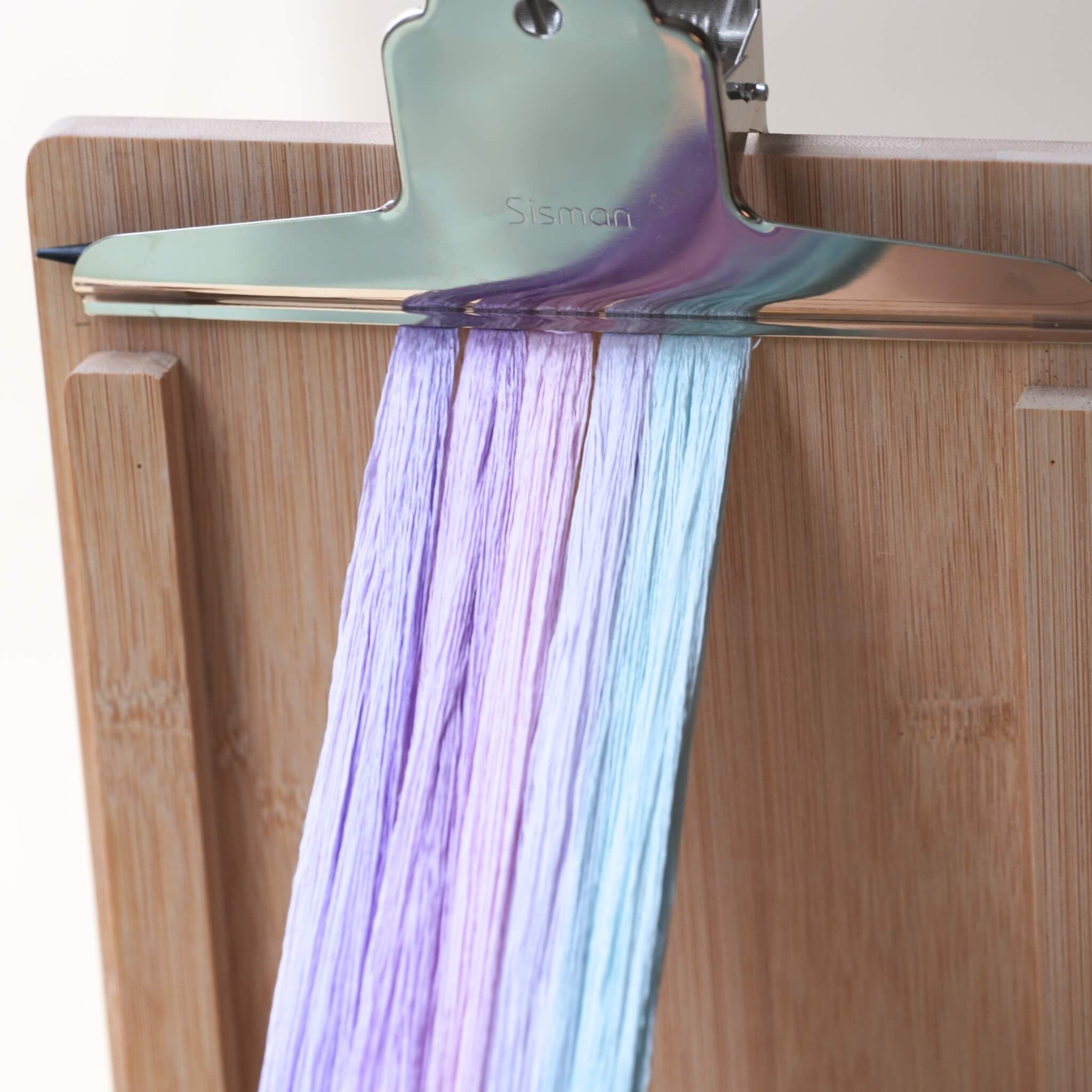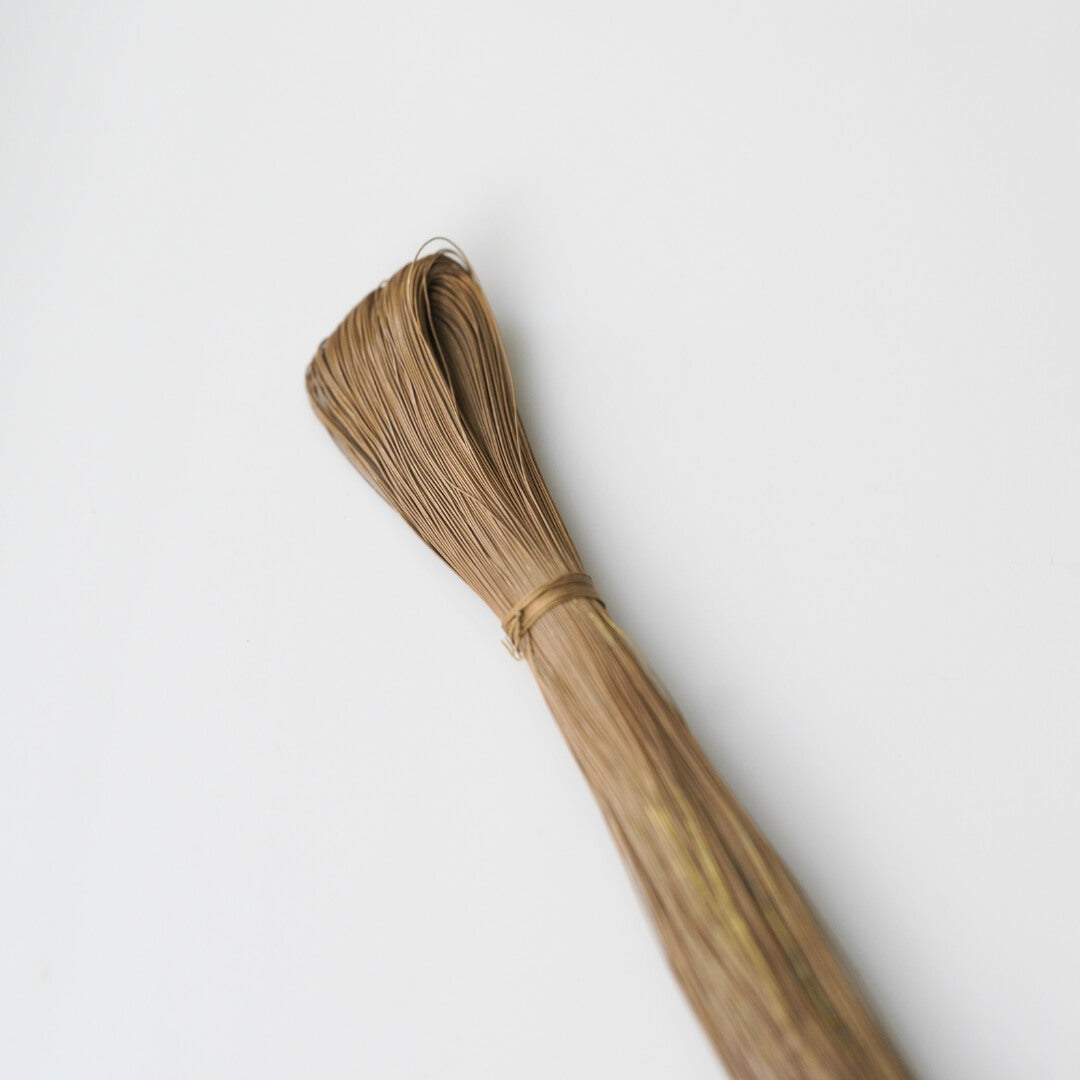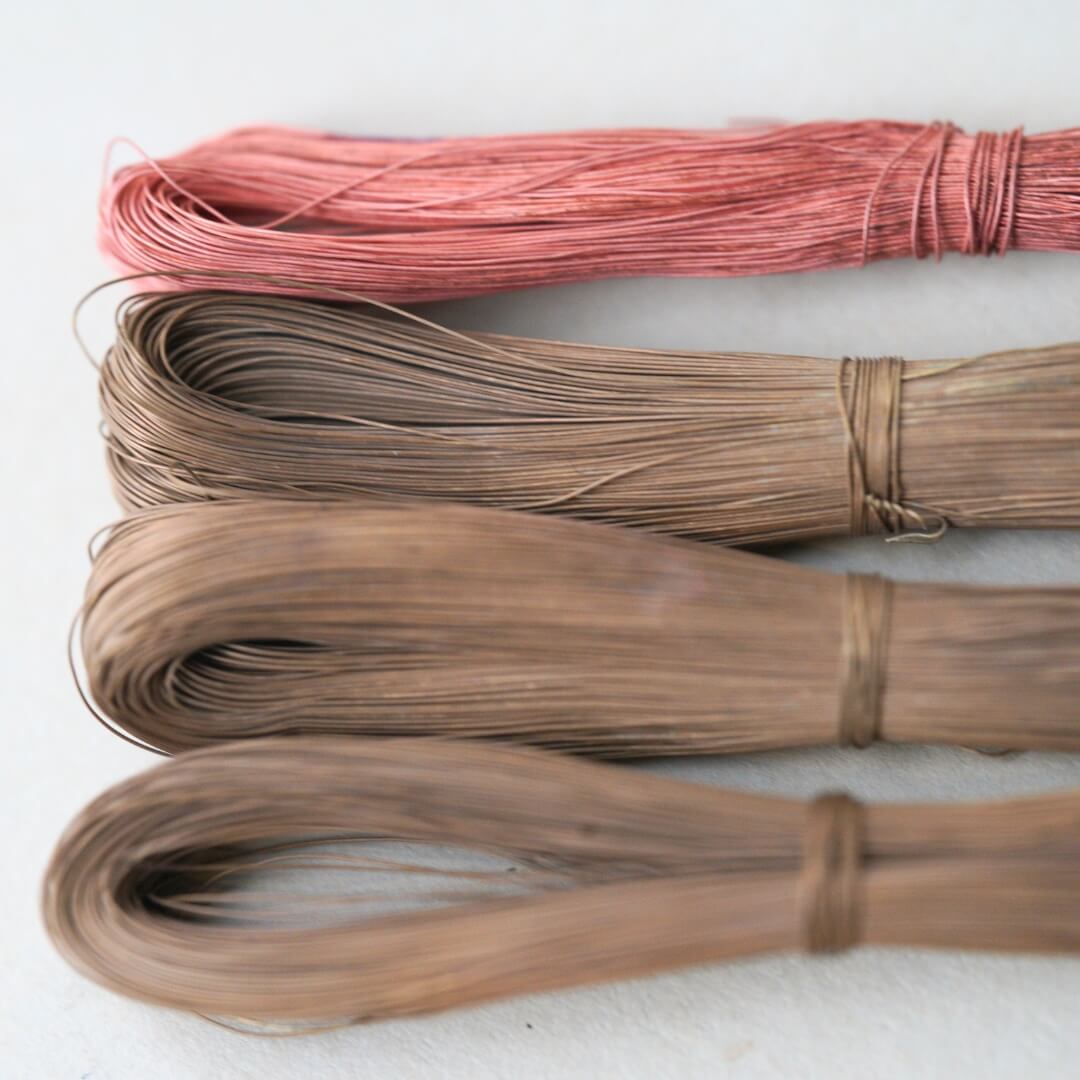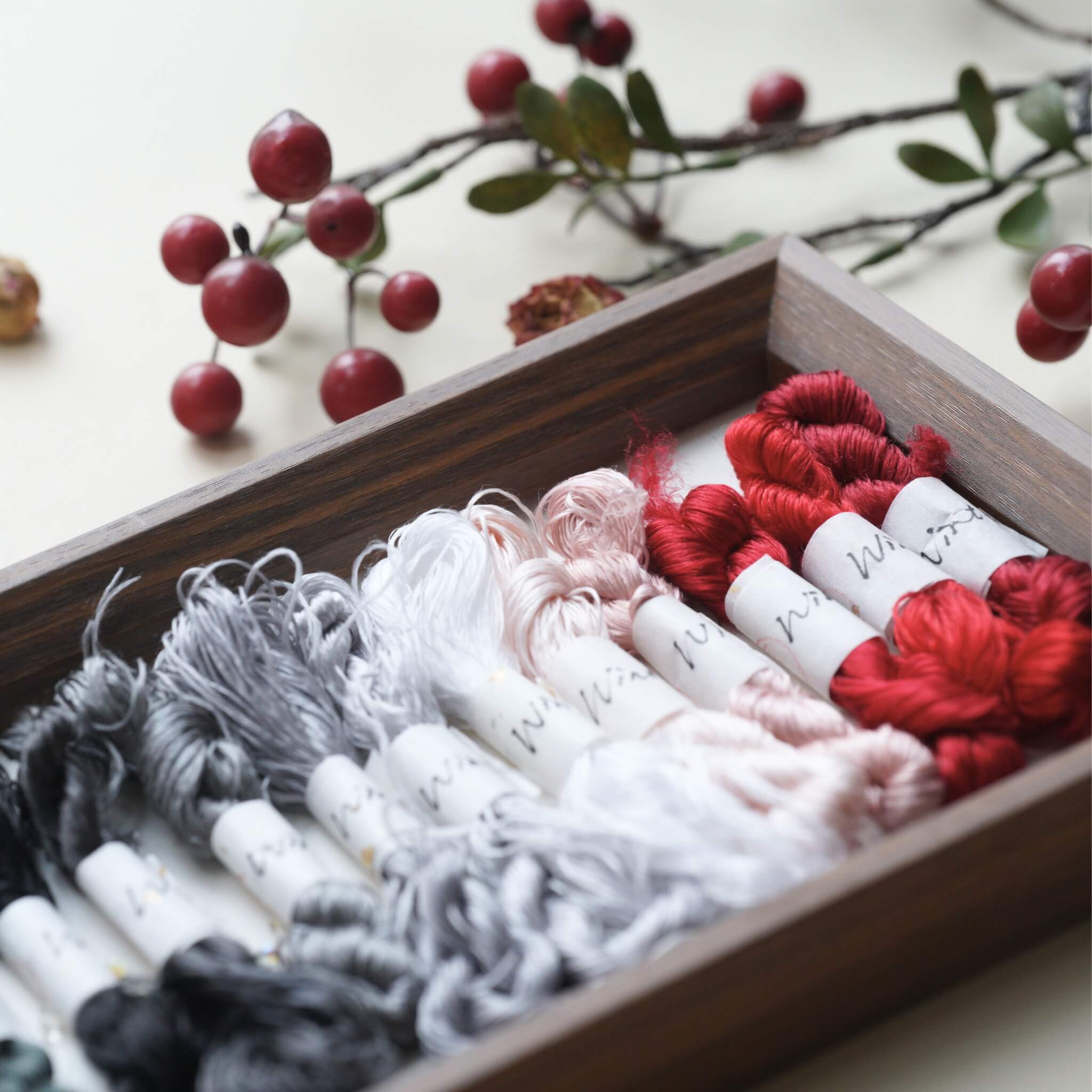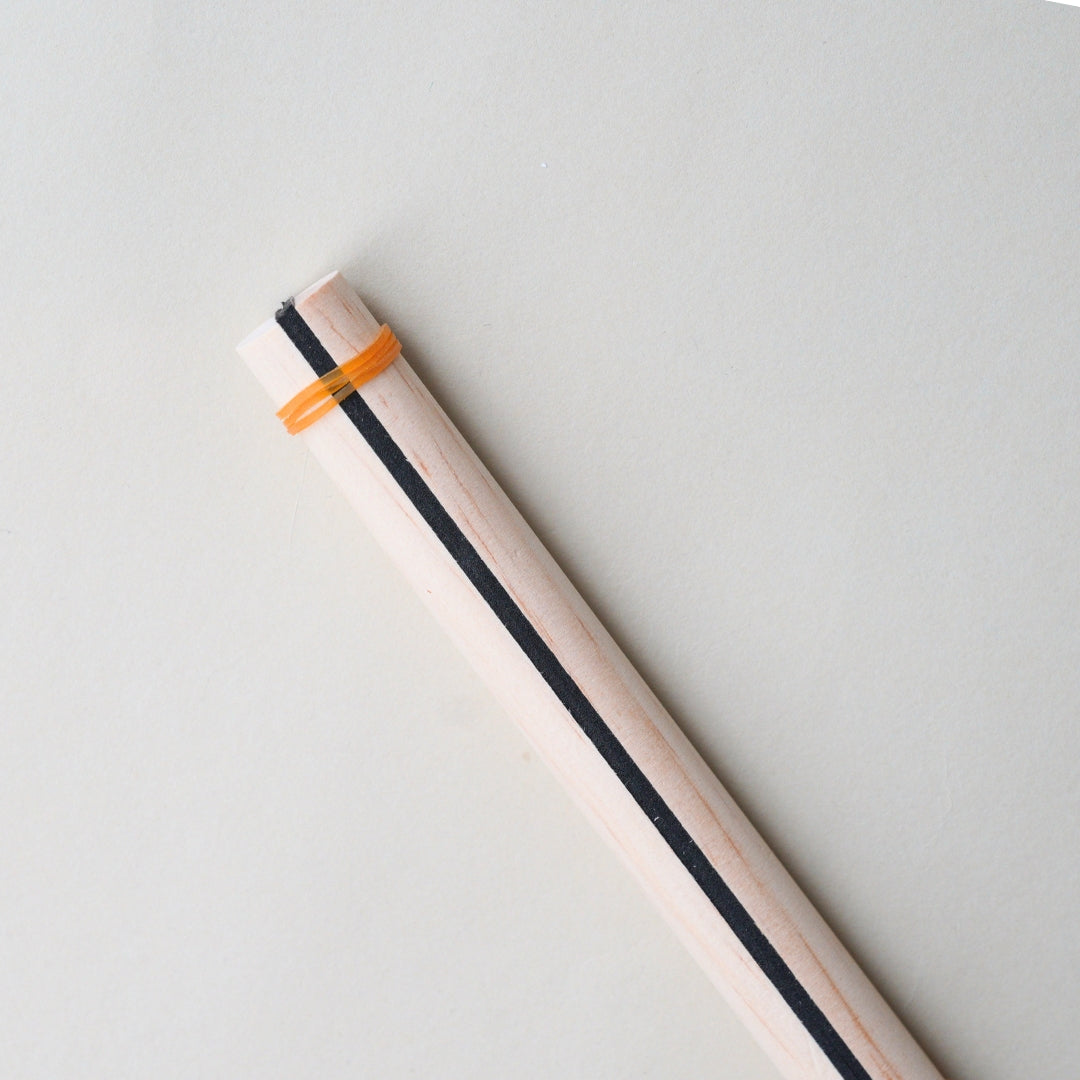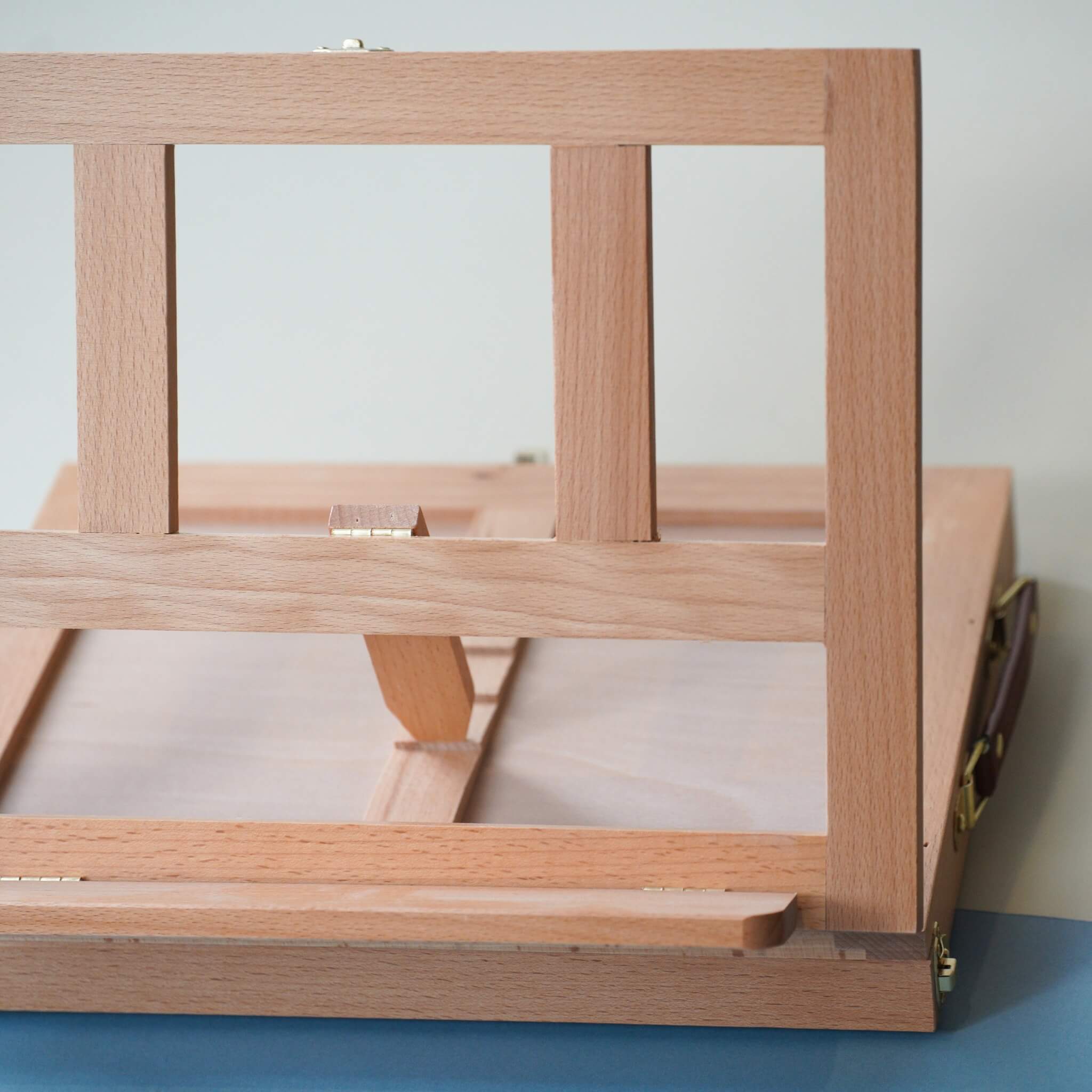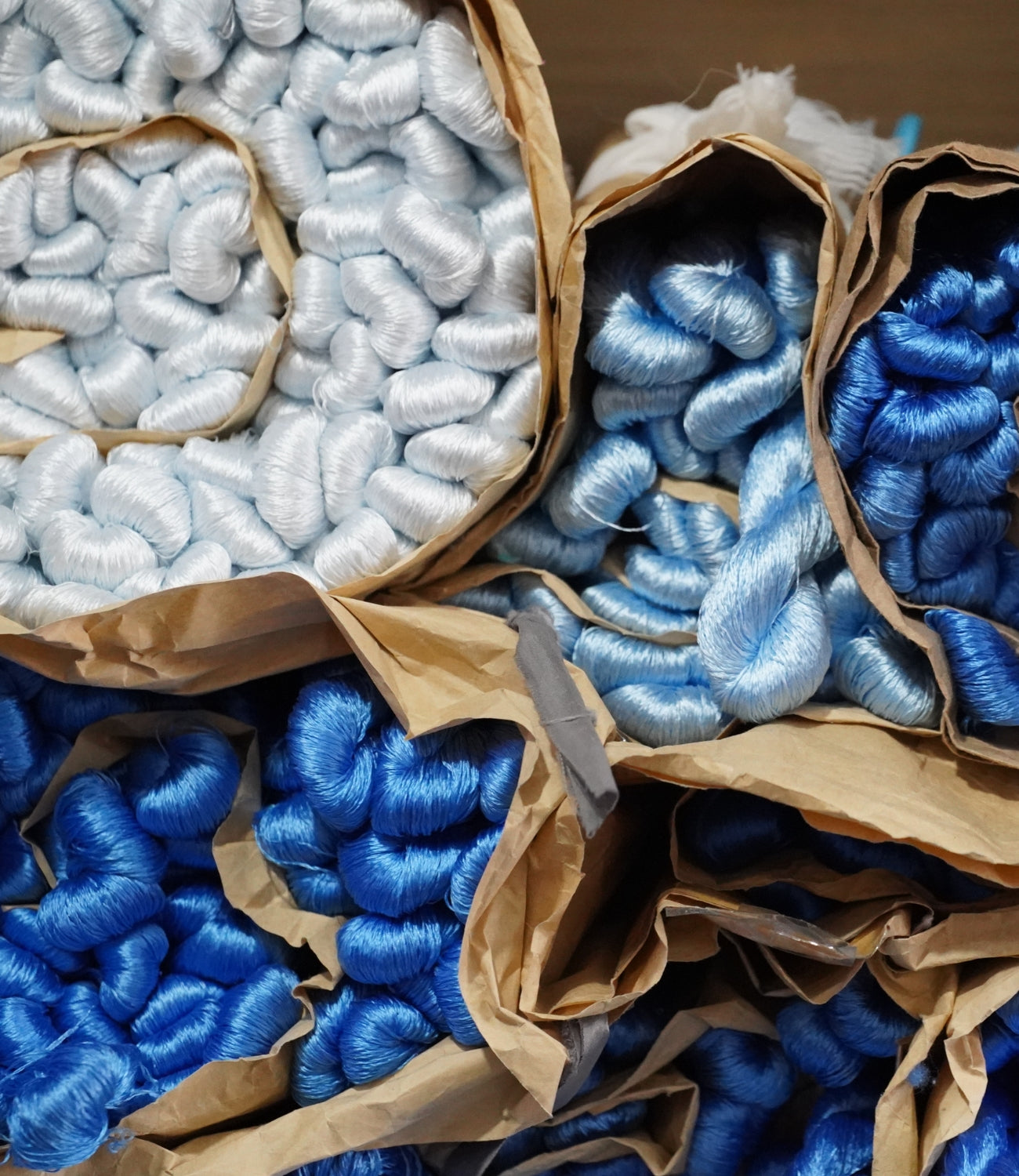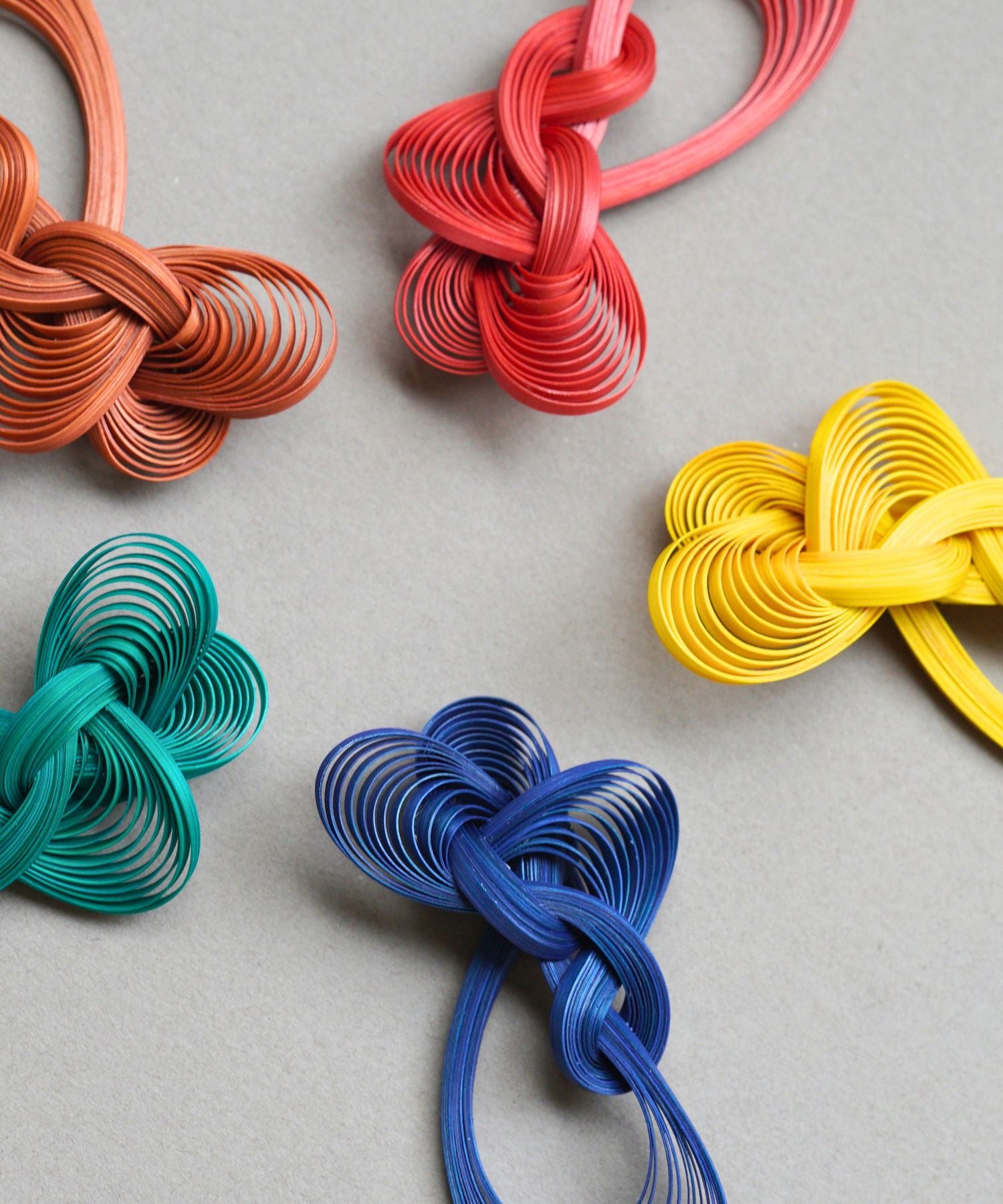The soul of ronghua lies in...
Mulberry Silk
Mulberry silk is known for its exceptional quality and luxurious feel, produced by silkworms that feed exclusively on mulberry leaves. It has a smooth texture and natural sheen compared to other kinds of silk in the world.
What is the industrial standard of mulberry silk?
According to the national standard GB1797-86 for raw silk grading, raw silk is classified based on the comprehensive assessment of physical indicators and appearance quality into 6A, 5A, 4A, 3A, 2A, A, B, C, and substandard grades, with 6A being the highest grade.
The main quality inspection items for raw silk include: fineness deviation, maximum fineness deviation, uniformity second-degree variation, cleanliness, purity, uniformity third-degree variation, breaks, breaking strength, breaking elongation, and defects.
All the mulberry silk threads available in our store are of 6A quality.
What is the difference between twisted and twistless silk threads?
Twistless silk refers to silk that is not twisted during the production process, with control only over the fineness of the yarn. Tightly twisted silk, on the other hand, involves using special twisting equipment to make the yarn more tightly twisted.
Twistless silk is relatively soft, has good elasticity, high gloss, and is light and thin, but has lower wear resistance. Tightly twisted silk is relatively stiff and feels rougher, but it has better wear resistance and a stronger sense of thickness. When it comes to crafting ronghua, we prefer twistless silk for its loose and soft texture. If dealing with twisted silk threads, an extra step of splitting the threads is needed.
Any question?
Having other questions about materials of making ronghua? You can contact us through our contact page! We will be happy to assist you.






